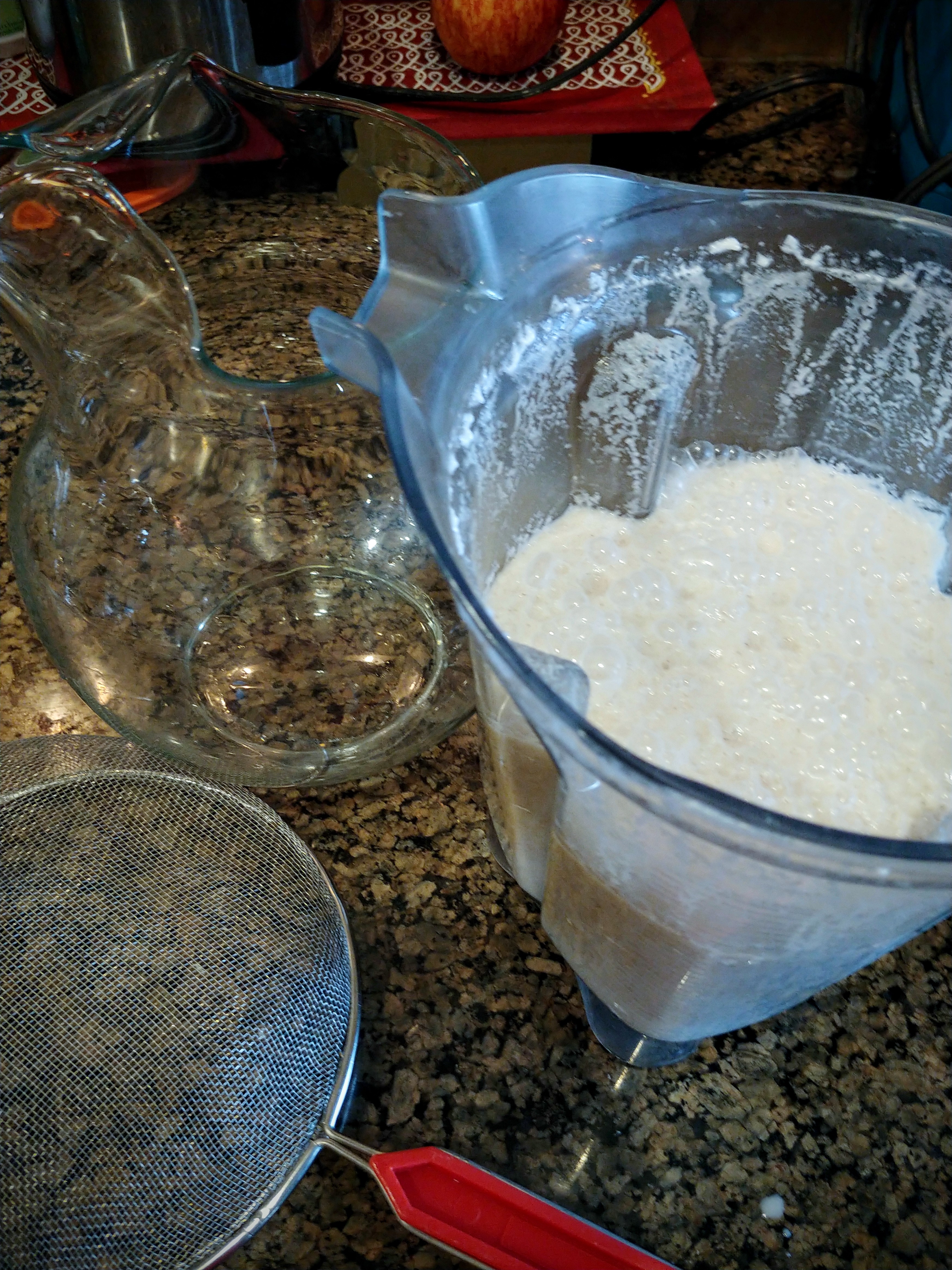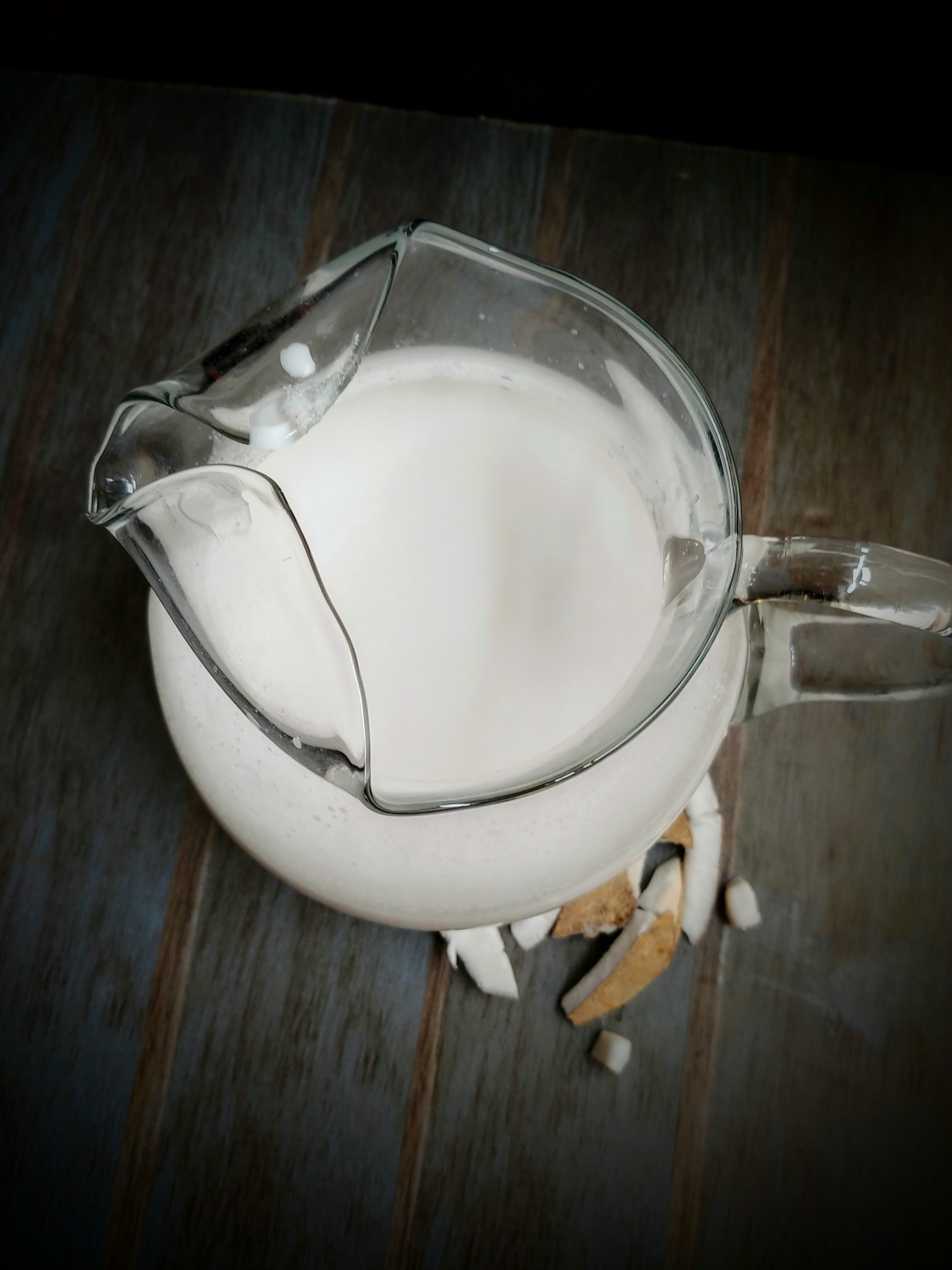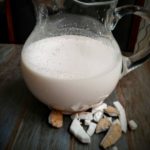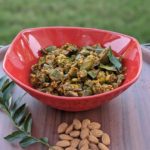Have you tried making coconut milk at home ? Home made coconut milk is not only full of flavor and delicious, it is also rich in nutrition and is a staple in South Indian households. Its can be used in breakfast’s for traditional Appams, Idiyappams, and in coconut based curries. It can be a great substitute for dairy in many delicious whole30 recipes. It also works really well as a milk substitute in your coffee, tea, smoothies, and also just a delicious drink by itself.

I made the coconut milk for the appam breakfast at home, which happens to be the most popular breakfast requests by my kids. I’ll share the traditional way of making it, which is also my mom’s way. The process is pretty simple. All you need is a fresh coconut.
How to select a good coconut
I always choose a coconut without any hairline cracks or mold on the top part of it. I make sure to shake the coconut to hear the sound of the coconut water. Lots of times, a crack could make the water leak out and the coconut could end up being moldy inside. Using a coin, and tapping on all sides of the coconut for a clear bell like sound will also ensure that you get a good fresh coconut.
How to crack open a coconut
To crack the coconut evenly into two halves, soak in water for 15 to 20 minutes. Use a clean hammer to crack the coconut by hitting it in the middle a few times, while holding the coconut with all 5 fingers as if its placed on the palm. Make sure that there is a little space between the coconut and the skin of the palm. Placing a kitchen paper towel or a cotton kitchen towel on your hand might be a good idea as the coconut crack might pinch your skin, which can be pretty painful ! Yup been there, done that !
Keep a wide mouthed pan to catch all the coconut water, which is a refreshing drink full of electrolytes. Some people make a hole through the top three weak points, and empty the water out and then break it with a hammer, but we always break it the traditional way . The job is mostly assigned to S, as he’s pretty good at it 🙂 !
Once the coconut is cracked open empty out the water. Using a blunt small knife, break small pieces of the coconut out of the shell.
Recipe

Once all the coconut meat is collected, place it all in your blender and add 3 cups of water. Run it on high speed till fully blended ( I had a really big coconut, for a smaller coconut add less water). I use my Vitamix for it, but any good blender would work. The coconut will need to be blended a few times to get all the milk out.

Using a big strainer, strain out the first batch of the milk. Put all the pulp back in the blender and add another cup of water and repeat the process. Strain out the second batch of milk. press the pulp well to squeeze out all the milk. Repeat the same process one more time with 1 cup of water. Strain and squeeze well one last time. The first batch of milk is the thickest milk you’ll get, and the subsequent batches will be thinner. I mix all the batches together. But if you want the thickest milk for your coffee or tea, save that milk separately.
Coconut milk is pretty heavy so it is traditionally thinned out. I finally run the milk through a tea strainer to remove any left over pulp to get a very smooth consistency. Kids have it with palm jaggery or coconut sugar. you can also add maple syrup or sweetener of choice. Coconut milk can go bad real quick, so refrigerate it in the back of the fridge and consume within three days.

Coconut Milk
Ingredients
Ingredients
- 1 whole coconut
- 5 to 6 cups water
Instructions
- Break the coconut and slice out the coconut meat.
- Add all the coconut meat in the blender with 2 to 3 cups of water and blend it to a smooth consistency.
- Strain the milk out using a strainer, making sure to squeeze out all the milk.
- Save this milk separately if you want to use it in your coffee or tea as a creamer.
- Add the pulp back into the blender, add a cup of water and blend well again. Repeat the process of straining and squeeze out all the milk.
- Add the left over pulp one more time with a cup of water and blend well again. Repeat the process for straining. The pulp would hardly have any life left in it so I usually discard it in the compost.
- Run the milk through a tea strainer which has a finer mesh a couple of more times to remover any pulp which might have escaped the previous time.
- Store it in the coldest part of your fridge. If drinking s milk or using in other dishes dilute it further with a cup or two of cold water.





Leave a Reply